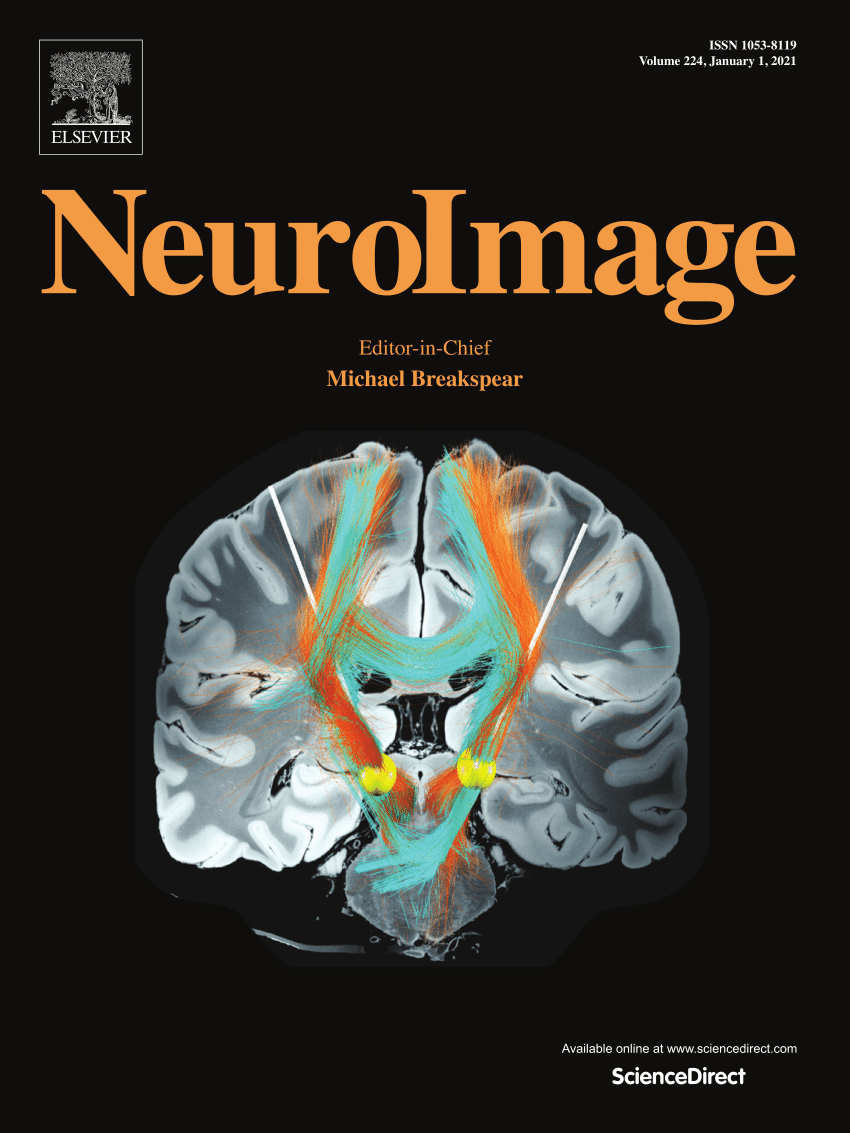Predicting imitative performance through cortico-cerebellar circuits: A multivariate and effective connectivity study
IF 4.7
2区 医学
Q1 NEUROIMAGING
引用次数: 0
Abstract
The ability to accurately imitate actions requires the contribution of the Mirror Neuron System (MNS) and of prefrontal and cerebellar regions. The present study aimed at investigating whether functional interaction between cortical areas and the cerebellum during the observation of complex bimanual actions can predict individual ability to imitate the same actions. Nineteen healthy participants underwent an fMRI task in which they observed complex bimanual action sequences (paper folding) and subsequently imitated the same sequences. Control conditions included passive observation of bimanual actions, observation of reaching movements, observation of actions without intent to imitate, and observation of natural landscapes. Participants’ imitation performance was video-recorded and scored for accuracy. Univariate whole-brain regression, multivariate pattern recognition, and generalized psychophysiological interaction analyses were used to assess whether activation patterns during the observation phase could predict subsequent imitation performance. The results showed that: (i) observing actions during the imitation condition activated parietal, premotor, prefrontal cortex, and lateral cerebellum; (ii) activation levels in the left anterior intraparietal sulcus (aIPS), ventral premotor cortex (PMv), dorsolateral prefrontal cortex (DLPFC), and right lateral cerebellum (CB VI) predicted imitation accuracy; (iii) a bilateral distribution pattern involving aIPS, PMv, DLPFC, and CB VI better predicted imitation performance than a whole-brain approach; (iv) increased effective connectivity between the right CB VI, left aIPS, and left DLPFC during observation-to-imitate condition correlated with higher imitation accuracy. These findings underscore the role of the cerebellum within the MNS in simulating observed actions and enabling their accurate reproduction.
求助全文
约1分钟内获得全文
求助全文
来源期刊

NeuroImage
医学-核医学
CiteScore
11.30
自引率
10.50%
发文量
809
审稿时长
63 days
期刊介绍:
NeuroImage, a Journal of Brain Function provides a vehicle for communicating important advances in acquiring, analyzing, and modelling neuroimaging data and in applying these techniques to the study of structure-function and brain-behavior relationships. Though the emphasis is on the macroscopic level of human brain organization, meso-and microscopic neuroimaging across all species will be considered if informative for understanding the aforementioned relationships.
 求助内容:
求助内容: 应助结果提醒方式:
应助结果提醒方式:


